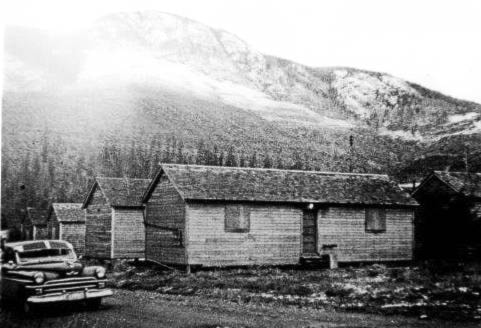Elida Peers | Contributed
A picture of the crew bunkhouses at Bear Creek Camp in the San Juan River Valley in 1958. This photo came to us from Eric Clay, a grandson of the Donaldson family that farmed at the far end of East Sooke Road, a property known as Spirit Bear Ranch today.
At the time of this photo, B.C. Forest Products was logging at Bear Creek, some miles northeast of Beach Camp at Port Renfrew. The hillsides here were heavily forested with high-grade Douglas-fir, with a bit of Western redcedar.
Malahat Logging Company initiated both Beach Camp and Bear Creek Camp, long before B.C. Forest Products came on the scene.
MORE HISTORY: Entrepreneur brought innovation to Sooke’s business centre
In 1939, Malahat built the famous Bear Creek trestle, considered to be the highest wooden structure in the world. At the height of activity, some 200 to 250 men worked at Bear Creek. The community consisted of bunkhouses, cottages for families, a cookhouse, sports facilities and a school.
Eric Clay noted that he slept in the left-hand corner of the foreground bunkhouse, right next to where we see his parked 1950 Chrysler Windsor. Before 1958, you would not have seen many automobiles in the community, as that was the year road access became possible from Jordan River to Port Renfrew.
The pictured bunkhouses had been brought in by barge from Point No Point, where they had been used by Island Logging Company.
In the late 1930s, Malahat built 20 miles of logging railway from Beach Camp to Bear Creek. Equipment that came from Island Logging’s show at Point No Point included a 110-ton Shay and a 50-ton Shay, plus skidders and loaders. The Shays were used to haul in the woods, while their faster Heisler locomotive hauled on the mainline.
B.C. Forest Products took over the operation in 1946, and by the time Eric Clay was hired in 1958, rail operations in the valley were over, and truck logging had taken its place.
Eric Clay went on to commercial fishing for a living. When he died in 2009, he arranged that a monument to his pioneering grandfather, Alexander Donaldson (note also Donaldson Island is another name for Secretary Island), be erected near the historic Donaldson property in East Sooke.
•••
Elida Peers is the historian of the Sooke Region Museum.
editor@sookenewsmirror.com
Like us on Facebook and follow us on Twitter
